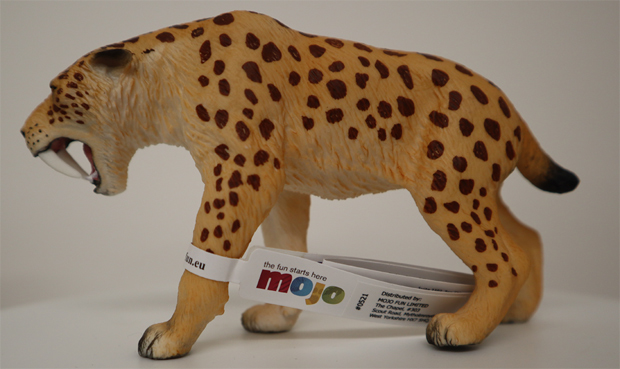How to Define an Epoch – Death of a Dolphin
Recently the team members of Everything Dinosaur were asked to comment about an article that had featured in a popular women’s magazine. The article was part of a feature which highlighted bizarre facts about the animal kingdom. The particular part that attracted one of our customer’s attention was the snippet on Sabre Tooth Tigers. The author had stated that the Sabre Tooth Tiger was the last tiger species to go extinct.
The Holocene Epoch
This customer had queried this, emailing us asking whether we could confirm that the Sabre Tooth Tiger was indeed the last tiger to go extinct. The first thing we had to do was to point out that the name “Sabre Tooth Tiger” was misleading. This phrase is commonplace, but Sabre-toothed cats are not closely related to tigers. We are not sure how this misnomer arose, or who was responsible for first coining the phrase “Sabre Tooth Tiger” but this term is now synonymous with the Smilodon genus.
Sabre-Toothed Cats
Sabre-toothed cats belong to a sub-family of the cat family (Felidae) called machairodonts. The machairodonts seem to have first evolved around 12-15 million years ago (mya) and although their ancestry is uncertain, they seem to have quickly spread all over the Northern Hemisphere, before moving into the New World an estimated 5 mya.
Once we had explained this, we then went on to point out that animals like Smilodon fatalis went extinct about 10,000 years ago (the last Sabre-toothed cats survived in the Americas until the end of the last Ice Age).
However, many more big cats have gone extinct far more recently. We know of at least three sub-species of tigers that may have died out in the last 60 years. The Caspian tiger (P. tigris virgata) which once roamed Afghanistan, Iran and parts of Russia has not been seen since the 1950s. The Javan tiger (P. tigris sondaica) was last sighted in 1972 and the Bali tiger (P. tigris balica) has not been seen on the island since 1947.
Yangtze River Dolphin
Today, we read that the Yangtze River dolphin or Baiji (Latin name Lipotes vexillifer) may have died out as well. This mammal, that could reach lengths of over 2.5 metres was last seen in 2002 and a survey conducted in the animals habitat failed to record a single dolphin. It would be no surprise if this cetacean had become extinct. The Yangtze river is one of the world’s busiest waterways, it has been extensively over fished and is heavily polluted as China’s economy continues to grow.
Officially, the Worldwide Fund for Nature only recognises that a species is extinct if it is not seen for 50 years. The Yangtze River dolphin remains on the Critically Endangered classification but if any are surviving, they are so few in number not to make the species viable.
Sabre-Tooth Cat Model (Mojo Fun Prehistoric Life Smilodon)

The Mojo Smilodon model is a replica of a sabre-toothed cat. The Smilodon model measures approximately 13 cm long.
Picture credit: Everything Dinosaur
The picture (above) shows the Mojo Fun Prehistoric Life Smilodon model, to view the Mojo Fun range of prehistoric animal figures: Mojo Fun Prehistoric Life Figures.
The magazine article on Sabre-toothed cats also provided information on how time is divided up into geological periods it mentioned that scientists classify the time since the last Ice Age as the Holocene (recent time). When we submitted our notes clarifying the points raised about the cats, we were asked to state what the Holocene stands for. We commented about this mentioning the obvious – this being an interglacial period, the ascent of man moving to a sedentary lifestyle with domesticated animals, the rise of civilisations and so on. We also commented that the Holocene was being marked by the dominance of just one species – us.
Homo sapiens
In just 10,000 years the population of Homo sapiens has exploded and our impact on this planet is being felt everywhere and by every other creature. The Holocene epoch could be defined by extinctions caused by the activities of mankind.
We lament the passing of the Yangtze River dolphin, sadly much, much more is yet to come.






Leave A Comment